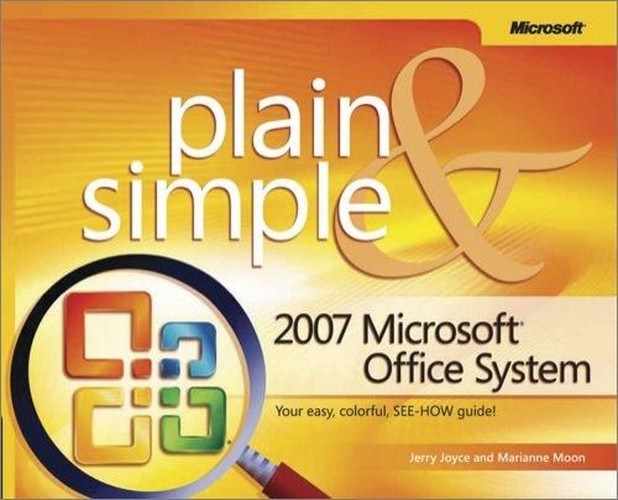In this section:
Even if you don’t have the time, inclination, or experience to design the documents you use every day, you can still produce professional-looking, well-designed letters, reports, memos, and even the Great American Novel. You do this by using the themes, styles, fonts, colors, borders, shading, decorative lines, and other design elements that Microsoft Office Word 2007 provides to help you create, design, and maintain consistency throughout the documents you produce at work, at school, or at play. Depending on your desired end result and how little or how much involvement you want in the design, you can use the predesigned themes and style sets just as they come, without changing a thing; you can modify the existing ones a little or a lot; or, with a bit of time and experimentation, you can create your own highly individual designs.
We’ll cover a lot of topics in this section, including creating, formatting, and working with lists and tables; laying out your pages, and using automatic hyphenation to improve the overall look of the layout; setting up a long document such as a book or report that you intend to have bound, dividing it into chapters or sections, and adding running heads; flowing text into columns like those in a newspaper or magazine; and wrapping text around a graphic for a very professional look.
Microsoft Office Word 2007 provides powerful tools that make it possible for you to easily create professional-looking documents. To simplify the design process—and thereby avoid the chaos that’s often a problem in heavily formatted documents—Word’s tools help you build consistent layouts with a minimum of hassle.
Themes: The master controllers of the design, themes set many elements, including the default fonts; the color schemes for text, horizontal and vertical lines, and backgrounds; and the shading and shadow effects in graphics. When you change a theme, you change the entire appearance of your document. You can change the whole theme or only individual elements—the default fonts, for example, or the color scheme or shading effects. Word comes with many built-in themes, but you can also design and save your own themes. See "Setting the Overall Look" on the facing page for information about choosing and changing themes.
Paragraph Styles: These styles define the layout of your paragraphs—line spacing, indents, tab spacing, borders, and so on.
Character Styles: These styles define the look of individual text characters—for example, boldfaced, italicized, or underlined emphasis; strikethrough, superscript, color, and shadow effects; and spacing between characters. If you specify the font as something other than the theme’s default font, the character style can also define the font and font size. Otherwise, the font is determined by the chosen theme.
Linked Styles: These styles define both paragraph and character formatting—for example, in a single style you can define the paragraph layout, including the alignment and line spacing, as well as the appearance of the characters for the entire paragraph, including font, font size, emphasis, and effects. See the Tip in Tip for information about creating your own styles.
Table Styles: These styles define the appearance of your tables—for example, the shading of rows or columns and the thickness of the gridlines. See "Formatting a Table" for information about using table styles.
List Styles: These styles determine the appearance of your bulleted and numbered lists—for example, the kind of bullet used and how far the paragraph is indented. See "Formatting a List" for information about using list styles.
Direct Formatting: You can use direct formatting to create customized words, paragraphs, or blocks of text. For example, you can apply bold formatting to a couple of words for emphasis, or select a quotation and add italics to it. Although you’ll want to use styles most of time to maintain a consistent look, direct formatting is a useful tool in certain instances. If you use direct formatting and later want to use the same formatting again, you can either use that formatting to create a new style or copy the formatting and apply it elsewhere with the Format Painter tool. See "Copying Your Formatting" for information about using the Format Painter tool.
